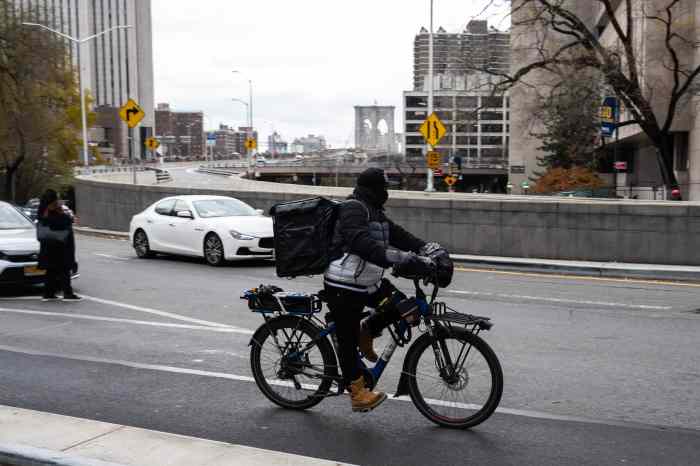If your stop-and-go woes on the Van Wyck Expressway seem worse than ever, it is not because there are more cars on the road, just bigger ones, said Iris Weinshall, the City’s outgoing Department of Transportation (DOT) Commissioner.
“You have SUVs, you got these minivans. I think the cars are getting bigger and there is a perception there is more traffic,” Weinshall said, according to published reports after a City Council hearing on Thursday, January 25.
According to the latest DOT statistics, traffic into Queens has remained more or less uncharmed in recent years.
The volume of traffic entering Queens from Brooklyn increased by 2,248 vehicles per day from 310,188 in 2001 to 312,436 in 2005. Nassau County traffic, however, decreased by 14 vehicles per day coming into Queens from 473,363 in 2001 to 473,349 in 2005.
Weinshall, whose resignation from the DOT was announced on Monday, January 29, testified before the City Council against a bill introduced by Councilmember Gayle Brewer of Manhattan last year that would require the agency to develop performance goals and report annually on its progress in achieving them.
The initial goals include reducing commutation time citywide; reducing household exposure to roadway emissions; reducing driving and increasing alternative transportation to central business districts; increasing street parking availability; increasing efficient movement of commercial traffic; and optimizing use of existing transportation infrastructure.
Weinshall testified that the annual Mayor’s Management Report already requires many of the objectives set forth in the bill, and that additional reporting requirements would be redundant.
“I would like to point out that DOT is already, in fact, collecting and making available much of the data the bill contemplates,” Weinshall testified.
According to detractors of Weinshall’s logic, the information currently compiled by the DOT is insufficient.
“The city is not collecting the basic information necessary to redress current gridlock much less plan for future growth,” said Bruce Schaller, a leading transportation consultant.
A recent analysis of the city’s traffic information needs prepared for Transportation Alternatives, an organization advocating for alternatives to automobile use in New York City, found a “paucity” of comprehensive traffic data, particularly outside of Manhattan.
“With escalating congestion choking the City’s economic development and job growth, the city isn’t going to move toward a more sustainable system by relying on antiquated measures,” said Councilmember John Liu, chair of the Council’s Transportation Committee.
Weinshall has accepted a position with the City University of New York as its Vice Chancellor for Facilities Planning, Construction and Management. Her final day with the DOT is scheduled for Friday, April 13.































